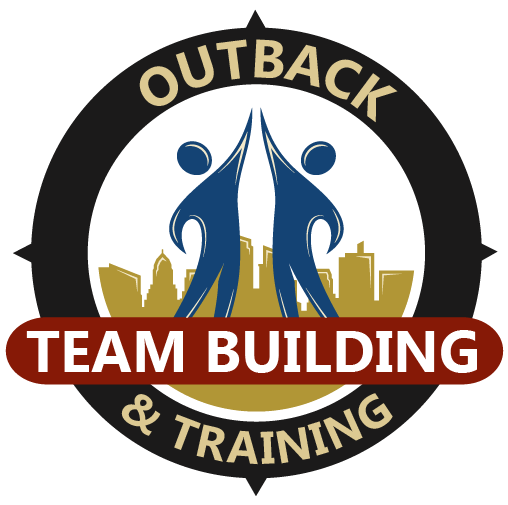What's trending in the world of recruitment this year? Here's what you need to know in 2019.
What's trending in the world of recruitment this year? Here's what you need to know in 2019.
If 2018 has taught professionals anything, it's that we need to stay ahead of the curve. Recruitment is changing at such a rapid pace and, if you want to continue to scout out top talent, you need to keep up with the latest shifts in the industry. After all, understanding the modern workforce can ultimately help distinguish a successful business from an unsuccessful one.
Power has continued to shift from employers to job seekers. In fact, according to the Recruiter Sentiment Survey by the MRINetwork, 90% of respondents defined the professional talent market as candidate-driven. As such, some trends from last year have continued to accelerate – while new technologies are the driving force behind even newer changes.
So, what's trending in the world of recruitment in 2019? Here are five things making the biggest waves this year:
1. Using Data and Analytics to Improve the Recruitment Process
The use of data and analytics are becoming more and more prevalent every year. According to a recent study by LinkedIn, 46% of companies use data to gain a deeper understanding of what their candidates actually want. Recruiters can apply the insights they receive from things like surveys, social media analytics, and automation tools to improve their hiring strategies and become empowered to make more informed decisions. Here are some ways you can incorporate data and analytics in your hiring process:
- Identify and Eliminate Sticking Points: You can keep track of specific things to help streamline the process on your end. For example, you can take note of how many emails your hiring team exchange with potential candidates to see if there are any specific stages where you can speed up the process.
- Uncover Hiring Issues: You can review the conversion rates on your application form to determine if there are any steps in your interview process where people drop off, if you need to change any of your questions, or even redesign your job application as a whole.
- Reach More Objective Decisions: You can help push away any biases when picking the best candidate by leveraging predictive analytics that use algorithms to do things like measure attributes that can make a great hire, mitigate the influence of any kind of discrimination, and source evidentiary support for certain findings.
In a recent podcast interview with LinkedIn’s Bobby Brenman, we discussed the best practices for recruitment, including incorporating data and analytics and much more. You can listen to the episode of Outback Talks: The Employee Engagement Podcast here.
2. Artificial Intelligence
It's officially here. When it comes to the role of Artificial Intelligence in recruiting, a recent survey from Korn Ferry identified some surprising and insightful numbers:
- 63% of talent acquisition professionals said that AI has already changed the way recruiting is done
- 40% said the top way it helps is by providing valuable insights
Using AI-powered recruiting tools can help improve how you find quality candidates in several ways, including:
- Automated Candidate Sourcing – Manually looking for candidates, whether on job boards or social media, can be incredibly time-consuming. AI can help recruiters automate their sourcing process and even extend their reach – certain software, like Ideal, for example, can analyze a high volume of resumes and shortlist potential candidates.
- Facial Expression Detection Technology – This type of technology can analyze facial expressions, taking note of things like people’s moods, word choices, and speech patterns. This tool can be particularly useful for video interviews or with potential candidates who work remotely.
These kinds of tools can assist recruiters by taking mundane tasks off of their plates, and, in turn, allowing them to focus more on the other elements of the process. Of course, there is some debate on AI having the potential to go too far and removing a critical human element of the process: personalized engagement. Ultimately, though, the technology is here – how or how much you choose to apply it is, really, up to you.
3. Creating an Outstanding Candidate Experience
The Candidate Experience refers to the candidate’s overall perception of a company’s recruiting process. This can include things from the job application process to the recruiter's attitude towards them. With markets being so candidate-driven these days, it’s important for companies to keep this point at top of mind.
When the candidate has a positive experience with your company – your brand – they’re more likely to accept the job and even refer others to your organization. To help make the candidate’s experience a positive one, try to:
- Communicate - Always tell candidates what they can expect next and keep them informed every step of the way.
- Include Details - Be totally transparent and include necessary information like salary, role requirements, and benefits in the job posting.
- Not Go Overboard - While it's vital to include important details, it can be a turn off when the job application asks the candidate for too much information, especially at such an early stage.
4. Building Great Employer Brands
Your employer brand is your reputation as an employer. The goal of employer branding is to present your company as a desirable employer and attract top candidates. Research by LinkedIn shows that over 75% of job seekers research a company’s reputation and employer brand before applying for a job. And, when deciding on where to apply, 84% of job seekers say the employer’s reputation is an important factor, according to a study by CareerBuilder. With this in mind, it's important for companies to build a strong brand that showcases their core values, culture, and mission in a compelling way. Here are three ways you can achieve this:
- Define Your Voice - Create an authentic message and tone for your brand, so that candidates know exactly what to expect from you as an employee. The brand voice should be consistent, with your message aligning on all of your platforms from your company website to social media channels to job postings.
- Highlight Company Culture - Social media is an excellent way to show off what a great place your company is to work at. If your team partakes in charitable efforts or events, for example, sharing photos or videos of those things over social media is a great way to showcase what really matters to your organization – and entice job seekers to work there. After all, according to YourCause.com, 75% of millennials are willing to take a pay cut to work at a company that engages in CSR (Corporate Social Responsibility) initiatives. If your organization isn’t already involved in CSR, Charity Team Building activities are fun and unique ways to do something good for the community while building stronger bonds with your team. Charity Bike Buildathon and Random Acts of Kindness are favorites among our clients.
- Build Brand Advocacy - Employees, both past and present, will likely use platforms like Facebook, LinkedIn, Glassdoor, and Indeed to share their experiences with your company and look at reviews before they decide to work there. These channels are an important source of feedback and recommendation, so make sure that people have good things to say about you.
5. Mobile Optimized Job Postings
In today's digital day and age, job seekers are increasingly using their smartphones to conduct searches and apply for jobs. In fact, according to research by Undercover Recruiter, over 90% of job seekers use their mobile devices to look for a job and 45% do so on a daily basis. It's simply another way that businesses need to adapt to the ever-changing and candidate-driven workforce. Here are some tips on how to do that:
- Optimize Your Job Posting for Mobile - Google has stated that it’s favoring mobile sites over desktop sites in search results. If your website isn’t mobile optimized, it will negatively affect your search ranking, and you’re going to miss out on some major opportunities. The same applies to a non-mobile optimized job posting, as well. Reach out to your web developer to learn more about how you can optimize your website and recruitment page for mobile.
- Keep it Simple - Scrolling is one of the biggest hindrances of an effective mobile job posting. People are going to only spend so much time scrolling down the page or clicking through to other ones before they lose interest. Try to make your posting fit on one screen, keeping the details short and to the point.
- Sort and Filter - If your company has multiple openings, have a landing page on your career site with some filtering options that can easily direct the candidate to the department they're interested in. Otherwise – especially on mobile – a long list of job postings can cause your site to be unresponsive and the potential candidate to be overwhelmed.
Want More Expert Advice on Recruitment?
Download your free and printable copy of The HR Guide to Recruitment for more tips and best practices on recruitment. You can also get in touch with our team to learn more about our top team building and training programs to help keep your employees engaged after the hire.



